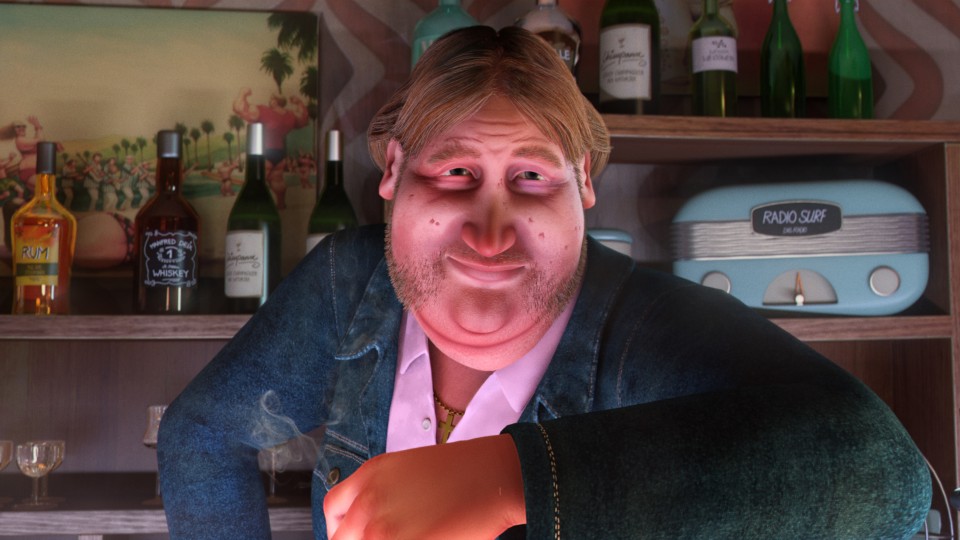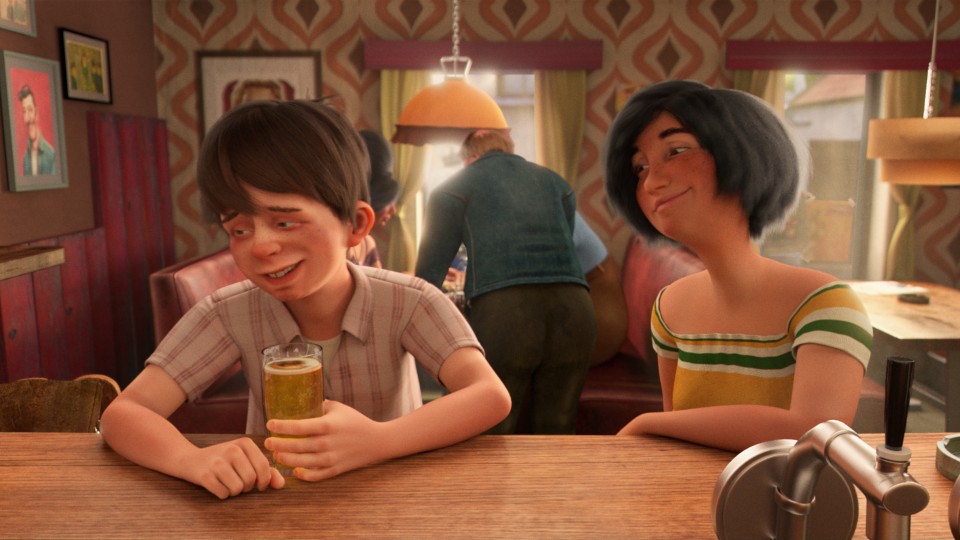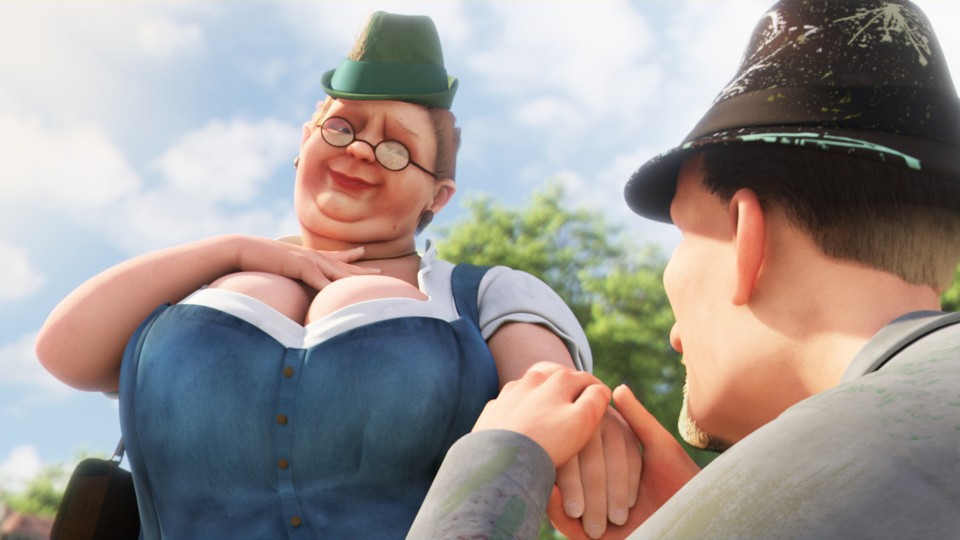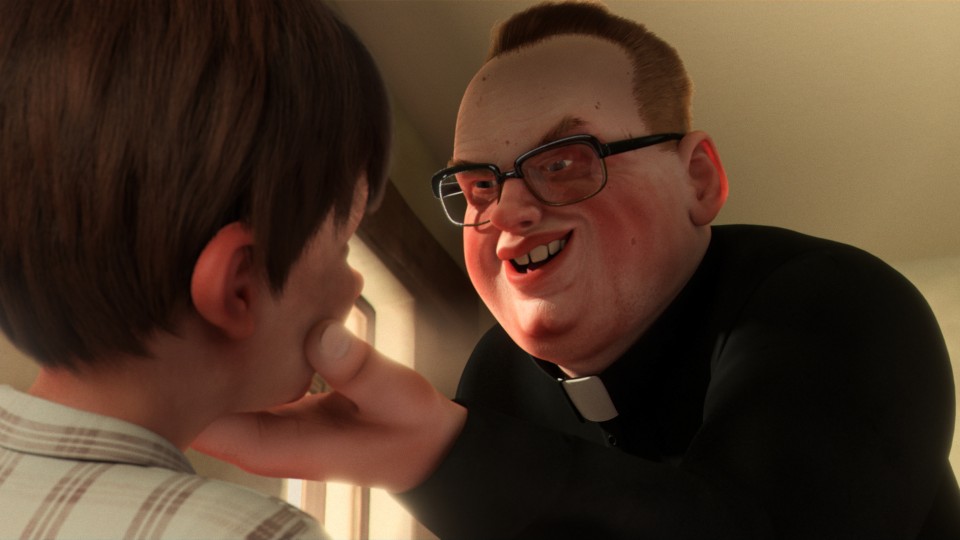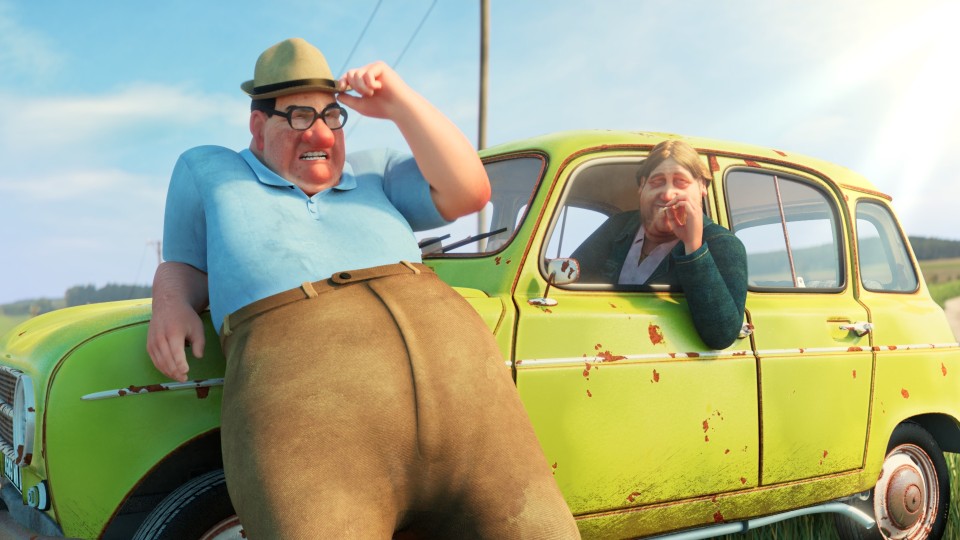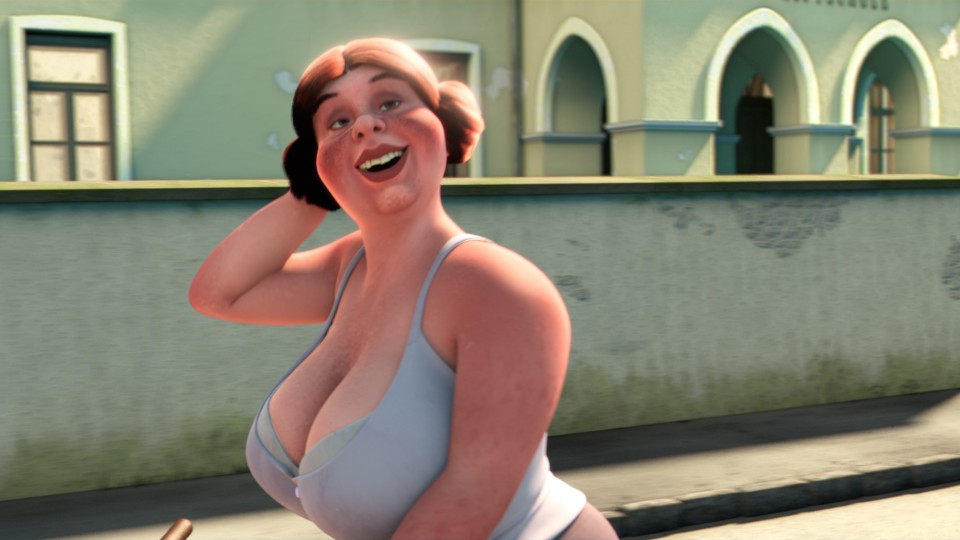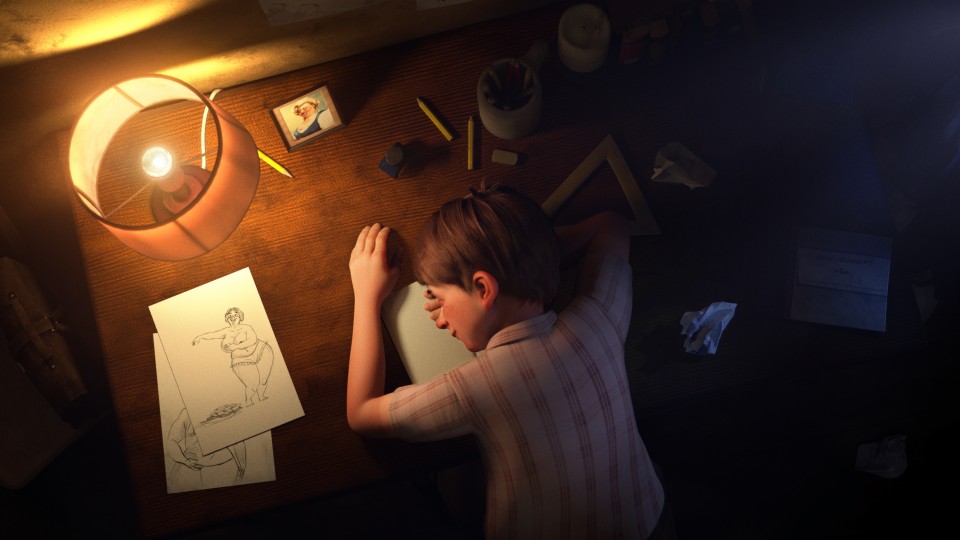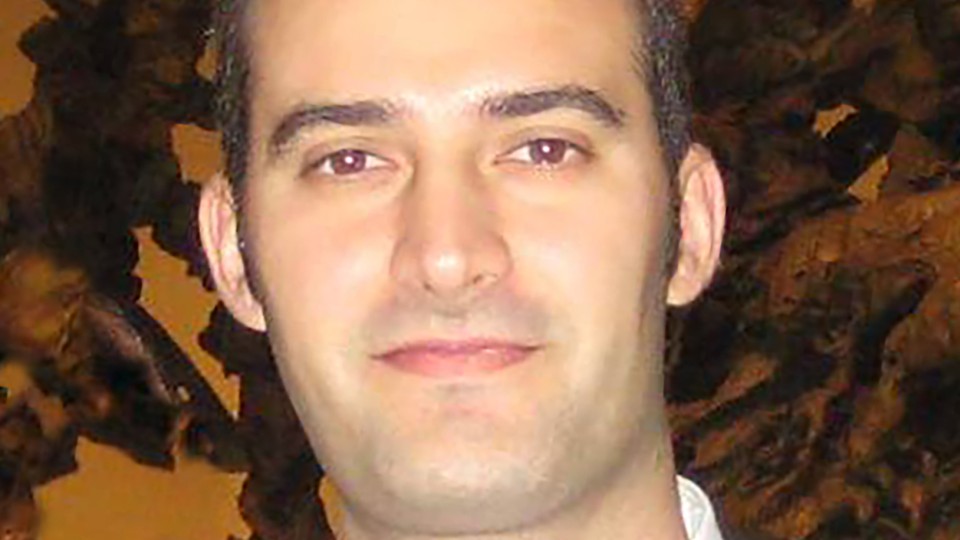Snotty Boy, Austria’s first feature length animation film, borrows the spirit and silhouettes from the unique cosmos created by late
Austrian caricaturist Manfred Deix. Santiago López Jover co-directed the film together with Marcus H. Rosenmüller adding his
profound experience as animation artist to this ambitious project that respectfully translates the essence of the legendary
cartoons.
We Austrians regard Manfred Deix’s drawings as profoundly “Austrian“, very provocative, sometimes repellent, maybe difficult
to understand for somebody from a different cultural background. How do they resonate in a Spanish mind? What were your first
impressions when you discovered the work of the cartoonist?
SANTIAGO LÓPEZ JOVER: For me it was definitely a very special case. I am from Spain, and I wasn't familiar with Manfred Deix before. My first reaction
was: “This project is not for me”. As a non-Austrian, it seemed too specific to your culture. My German was not good enough
to understand the humour of the drawings. The first graphic impression
there was that it had a slightly disgusting element.
I am also Catholic, and I felt provoked. But I steadily got to learn more about the artist, and I discovered his personality
and all the motivations behind his work. I saw some interviews with Manfred Deix, and I started to understand what he was
criticizing with his humour: the satire was there, but it was also the love for the human being. Josef Aichholzer, the producer,
wanted us to “meet” each other somehow, until I felt comfortable enough to work with this material, with Manfred Deix’s art
and humor. But my first impression was definitely a shock. We do have comparable caricaturists in Spain who are criticizing
the same kind of subjects, but in a different style. Unfortunately, I didn’t meet Manfred Deix in person, I joined the project
after his death in 2016. But I knew that he was involved in the first phase of the project, so his essence was there. And
what we tried was to be very respectful to his essence.
You are the co-director of SNOTTY BOY, the first feature length animation film produced with an Austrian funding majority.
What was your background as an animation artist before joining this project? Which projects have you worked on before?
SANTIAGO LÓPEZ JOVER: In all these years before SNOTTY BOY I had worked as animator, storyboard supervisor and character designer, on various projects,
such as animation films and TV-shows. My career as an animation artist started in 2003, when I finished Fine Arts and the
Animation School. I started as a stop motion animator working in small projects, and gained experience progressively as an
animation professional, working for different Spanish companies. I moved later to Ireland and worked there for some years
with the animation studio Cartoon Saloon, a studio that has made four feature length films so far, all of them Oscar-nominated.
That was the place where I learned the most. It’s a studio that focusses on the things I like most in animation: creative
filmmaking, original visual design, and compelling stories
: a true oasis of authenticity in the current animation scene,
and that made me love the profession even more.
Some years later I moved to Austria together with my family. And one of the first things I discovered was that the country
didn't have a tradition in character animation, and there were hardly any companies working in that field. So I continued
to work as a freelancer for the studio in Ireland until a Vienna based animation company, arx anima, contacted me, and I started
to work with them as supervisor. Four years ago I joined the SNOTTY BOY project, first as animation director. The studio Digital
Light Factory had lot of talented artists but no previous experience in making a whole animated feature film. When I stepped
in, there was a script, the drawings of Manfred Deix, and some beautiful work done adapting the Deix drawings in 3D – but
the storytelling and narrative style hadn't been built on storyboards. I started to work on SNOTTY BOY as animation director,
but nothing was ready for animation. Josef Aichholzer asked me whether I was willing to do that, and I plunged into that task,
creating the first boards and editing them in animatics.
How big was your team of young animators?
SANTIAGO LÓPEZ JOVER: We had two teams: one was in charge of creating the visual look and all the 3D elements that appear in the film, such as
the characters, the props, etc, under the CG supervisor Markus Huber. There were six or seven of them. I also had a team of
four storyboard artists and an editor, Philipp Bittner, who helped me to create the animatics. And then we had twelve animators
headed by Michael Merkatz. If you watch the credits of any Hollywood animation film you’ll see that they have endless credit
lists. We were a very small team, which was very good: more than a studio, we were a group of friends making a film
, and
of course it was challenging. Less people mean fewer possibilities.
How would you describe your collaboration with Marcus Rosenmüller who is an experienced live action director?
SANTIAGO LÓPEZ JOVER: Marcus is a very talented live action director. And I feel very lucky to have worked with him and learned from him. Viewed
the other way round, he had no experience in animation filmmaking and needed to understand how it works at a basic level.
It was a necessary collaboration between us on all levels. When I stepped in, he was struggling with the storyboard; in animation
this has nothing to do with a storyboard for a live action film. An animation storyboard doesn’t only show the camera angles
and the composition of the image, but also the acting of the characters in detail. Marcus did an amazing job in directing
the voices, and he helped in scouting the locations and costumes that we translated later into images. He was very much involved
in the early stage of the project; once I was on board, I tackled the questions how to translate these ideas into animation.
Though SNOTTY BOY is the story of an adolescent boy, the film is conceived as an animation film for adults. What kind of challenges
does that mean compared to an animation movie for a young audience?
SANTIAGO LÓPEZ JOVER: I have been watching animation films for adults since I was an adolescent. I saw a lot of underground films, experimental
animation, anime... When I went to art school specializing in animation, I was already very much used to that kind of filmmaking,
which is less known, but does have a tradition, like in Japan for example. I had a big background. When I read the script,
I was glad to discover it wasn't a script for kids. Using animation is not a question of comedy or drama, animation is just
a medium to tell any kind of film genre. My first connotation was Fellini’s Amarcord with its the hilarious humour: the story of a rancid small town with many hilarious characters. It also reminded me of The 400 Blows by François Truffaut, which is a coming-of-age story not intended for kids. I thought the story was wonderfully appropriate
for an animation film, also with the historic context of Austria in the 1960s, the social revolution that was about to come.
All these subjects together really made it a very unique thing for me, something I had never done before.
Manfred Deix has a very particular style, technically speaking, using water colours to color the drawings. Was it a major
challenge to translate the very organic looking watercolour into computer generated images?
SANTIAGO LÓPEZ JOVER: That was one of the challenges. When I joined the project it had already been decided that the film would be made with 3D-characters.
My first thought was that this drawing style, with the textures of the water colours, would be more suitable for 2D. But when
I saw the work the team of animators had already done, I understood that it was possible to translate those caricatures into
3D. We had some visual and graphic solutions that were able to translate the texture of the water colours, regarding characters'
clothes and faces, and the lights. We used some filters, which you will not necessarily notice. If you compare some screen
captures with the work of Manfred Deix, you will see that we really studied how to translate his desaturated colour palettes
in the film. We never had a big budget that allowed us to make something extraordinary in terms of visuals, but we did our
best within the limitations we had, and I think the result is fair and respectful.
Austria is not so renowned for its tradition in animation filmmaking. How would you describe the potential of the people
you worked with on SNOTTY BOY?
SANTIAGO LÓPEZ JOVER: I love living here in Austria, which is a wonderful country, full of opportunities in many other fields. Over the years I
have established a good network of professionals in the animation industry who work and live here, most of whom were trained
abroad. Over the last 8 years I've seen the animation scene growing in Austria: there’s a lot of talent. Most of the artists
involved in SNOTTY BOY are from Austria; some of them had been working for companies abroad and came back to Austria to work
on this project. We all agree on the fact that the talent is here; the question is how to support and make it grow. It would
be wonderful if this film opens doors so more animation films are made here in future, and the artists here don't have to
move to other places to find work. The talent is here. It needs to be valued and supported.
Interview: Karin Schiefer
June 2021

